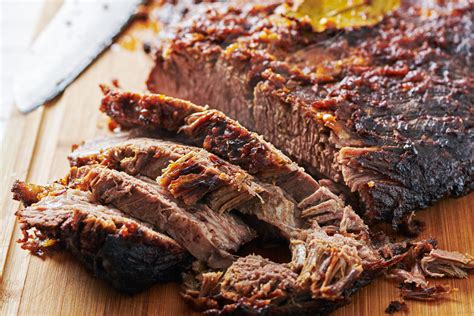Oven Brisket Recipe: A Step-by-Step Guide to Tender, Juicy Perfection
Brisket, that beautifully marbled cut of beef, is a true culinary champion. Known for its rich flavor and melt-in-your-mouth texture, it's a showstopper at any gathering. While often associated with long, slow smoking, a fantastic brisket can also be achieved in your trusty oven. This recipe will guide you through the process, ensuring a tender, juicy, and flavorful brisket every time.
Preparing Your Brisket for Oven Perfection
Before you even think about the oven, proper preparation is key. This section focuses on techniques to guarantee a mouthwatering outcome.
Selecting the Right Brisket
Choosing the right brisket is paramount. Look for a brisket with good marbling – that's the intramuscular fat that keeps it moist and flavorful. A good balance of fat and lean meat is ideal. Avoid overly lean briskets, as they can be dry.
Trimming the Fat
While marbling is essential, excessive fat can hinder the cooking process and impact the flavor. Trim away any thick layers of fat, leaving about ¼ inch to ½ inch of fat cap. This fat cap will help keep the brisket moist during cooking.
Seasoning Your Brisket Masterfully
Seasoning is where you inject your personality into the dish. This recipe uses a simple, yet effective blend, but feel free to experiment!
Ingredients for the Rub:
- 2 tablespoons kosher salt
- 1 tablespoon black pepper
- 1 tablespoon paprika
- 1 tablespoon garlic powder
- 1 tablespoon onion powder
- 1 teaspoon cayenne pepper (optional, for a little heat)
Seasoning Process:
- Pat the brisket dry with paper towels. This helps the seasoning adhere better.
- Generously rub the seasoning mixture all over the brisket, ensuring even coverage. Don't be shy with the spices!
Cooking Your Brisket to Tenderness in the Oven
Now for the main event – cooking the brisket in the oven! This low-and-slow method ensures maximum tenderness.
Oven Cooking Method
- Preheat your oven to 300°F (150°C).
- Place the seasoned brisket, fat-side up, in a roasting pan. Add about 1 cup of beef broth or water to the bottom of the pan to create moisture and prevent sticking.
- Cover the roasting pan tightly with aluminum foil. This helps to retain moisture and ensures even cooking.
- Cook for approximately 6-8 hours, or until the brisket is fork-tender. The cooking time will depend on the size of your brisket. A meat thermometer is your best friend here. It should register 190-205°F (88-96°C) in the thickest part.
Checking for Doneness
To check for doneness, insert a fork into the thickest part of the brisket. If it easily penetrates and the meat feels tender, it's ready. If it still feels tough, continue cooking in 30-minute intervals, checking with the meat thermometer until it reaches the desired temperature.
Resting and Slicing Your Brisket
The final step, often overlooked, is crucial for the best texture and flavor. Proper resting allows the juices to redistribute throughout the meat.
Resting the Brisket
Once cooked, remove the brisket from the oven and let it rest, wrapped in foil, for at least 1 hour. This allows the juices to redistribute throughout the meat, resulting in a more tender and flavorful brisket.
Slicing the Brisket Against the Grain
After resting, carefully slice the brisket against the grain. This means slicing perpendicular to the muscle fibers, resulting in tender, easy-to-chew slices. Serve and enjoy your perfectly cooked oven brisket!
Tips for Oven Brisket Success
- Use a meat thermometer: This is the most reliable way to ensure your brisket is cooked through.
- Don't open the oven frequently: This can cause heat loss and uneven cooking.
- Adjust cooking time as needed: Cooking time will vary depending on the size and thickness of your brisket.
- Experiment with different rubs: Feel free to experiment with different spice combinations to find your perfect brisket rub.
This oven brisket recipe guarantees a delicious and impressive meal. Remember, patience and a meat thermometer are your secret weapons to achieving brisket perfection! Enjoy!
